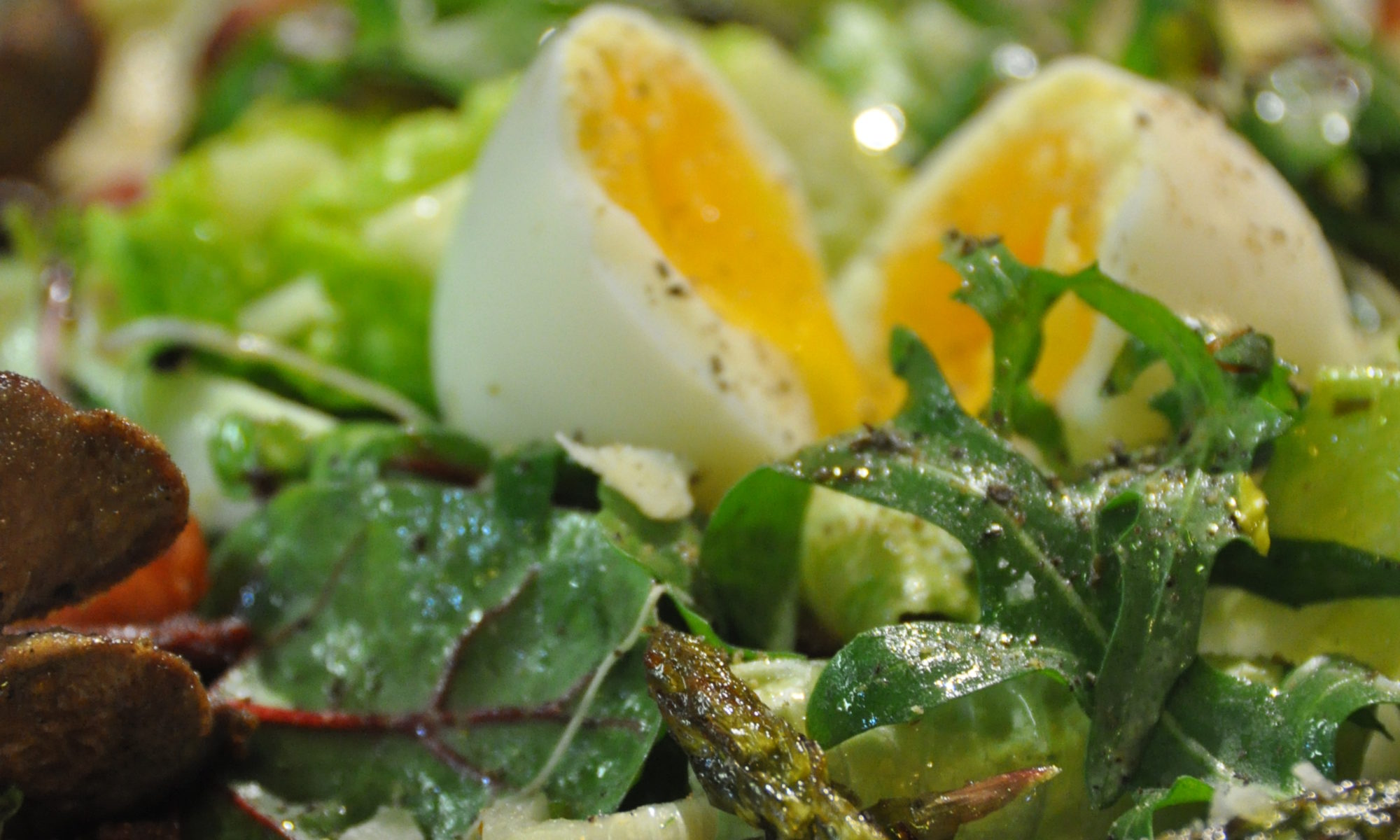This is another one of those concept dishes rather than an actual recipe.
The concept here is to go over the Farmer’s Market on a Saturday morning or stumble into the local butcher’s shop, then prepare a meal for slow cooking based on whatever was available or discovered in the fridge or larder.
Preparation takes about an hour, followed by an afternoon free for frolicking. Return hours later to a satisfying stew, on the table and ready to eat within minutes if you plan it right.
You’ll need a slow cooker or an oven with a low temperature cooking programme, or simply an oven which can hold 65 to 75 C for a couple of hours. You could even dig a traditional cooking pit! The trick is to stay below 80 C and leave the dish in peace for a couple of hours.
I like a piece of meat. Lamb shanks or leg slices, goat, mutton, high rib of beef or venison leg are my preferred choices. Clean the meat from sinew and remove skin, perhaps remove some of the fat.
Then clean a curiosity shop of vegetables. You will need onions and lots of garlic no matter what, also peeled waxy potatoes unless you wish to serve the meal with bread or other carbs, or no carbs at all!
Pretty much all vegetables that are in season are fine by me. Fennel, parsnips, savoy cabbage. Tomotoes, beans, peas. I’d stay away from courgettes or aubergines on this occasion but even cauliflower works thanks to the low temperatures.
Clean, peal, dice.
I caramelise the meat by searing in clarified butter on the cooker, using the same casserole dish that I plan to use for the whole process.
Remove the meat, then lightly caramelise the vegetables in the same pot with the help of olive oil or clarified butter.
Season to taste with salt, black pepper, red chillies, thyme, rosemary, lovage, star anise and cinnamon. Bring the meat back, add 75 ml of wine and 75 ml of water. Close the lid, put into the oven and forget about it for a couple of hours, four hours at least, five or six won’t give you trouble.
Allow for even longer if you are using tough meat such as ox tail, but for the types of meat listed earlier, four to six hours are just fine.
 Here’s another fantastic excuse for a bowl of saffron Basmati rice.
Here’s another fantastic excuse for a bowl of saffron Basmati rice. 


















 I am not sure if this is a concept or a recipe since it has seen so many variants over time, but it always comes out as a finger-lickin’ and lip-smackin’ success.
I am not sure if this is a concept or a recipe since it has seen so many variants over time, but it always comes out as a finger-lickin’ and lip-smackin’ success.














 Our private name for Spaghetti Aglio e Olio has always been quick pasta or Schnelle Nudeln to be precise, obviously in reference to the short preparation time and minimum effort required.
Our private name for Spaghetti Aglio e Olio has always been quick pasta or Schnelle Nudeln to be precise, obviously in reference to the short preparation time and minimum effort required.





 These savoury bread rolls make for great finger food to take along to a party and share. They are easily adjusted to vegetarians or vegans and can be very delicious, especially when straight from the oven.
These savoury bread rolls make for great finger food to take along to a party and share. They are easily adjusted to vegetarians or vegans and can be very delicious, especially when straight from the oven.



 This is perfect all year round, but it is particularly attractive now, before the first soft fruit ripens and the larder wants emptying of last year’s jam.
This is perfect all year round, but it is particularly attractive now, before the first soft fruit ripens and the larder wants emptying of last year’s jam.




 Everybody loves these, and most people usually say “oh! I remember we used to make those, too!”
Everybody loves these, and most people usually say “oh! I remember we used to make those, too!”



 This is a lovely vegetarian option for when you feel like saving the planet: a pan-roasted ginger and pumpkin soup with fresh spinach, seared feta cheese, pine kernels and toasted pumpkin seeds.
This is a lovely vegetarian option for when you feel like saving the planet: a pan-roasted ginger and pumpkin soup with fresh spinach, seared feta cheese, pine kernels and toasted pumpkin seeds.










 Not everyone’s thing but I don’t want to go long without: Steak Tartare, a spiced preparation of raw beef that goes well with fresh bread, French fries or Bretzeln. The leftover makes my favourite breakfast.
Not everyone’s thing but I don’t want to go long without: Steak Tartare, a spiced preparation of raw beef that goes well with fresh bread, French fries or Bretzeln. The leftover makes my favourite breakfast.















